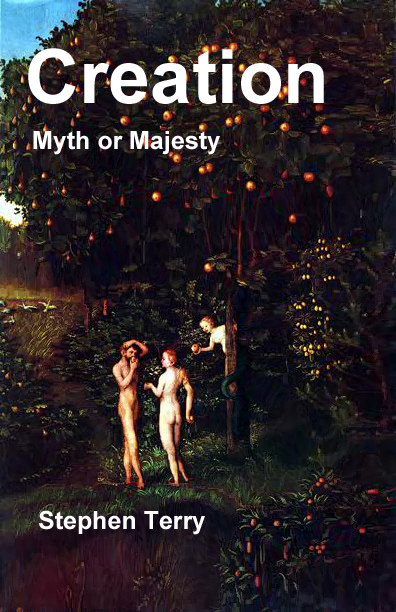The
Person of Peter
Stephen
Terry
Commentary
for the April 1, 2017 Sabbath School Lesson
 “When
Simon Peter saw this, he fell at Jesus’ knees and said, ‘Go away from me, Lord;
I am a sinful man!’ For he and all his companions were astonished at the catch
of fish they had taken, and so were James and John, the sons of Zebedee,
Simon’s partners.”
“When
Simon Peter saw this, he fell at Jesus’ knees and said, ‘Go away from me, Lord;
I am a sinful man!’ For he and all his companions were astonished at the catch
of fish they had taken, and so were James and John, the sons of Zebedee,
Simon’s partners.”
“Then
Jesus said to Simon, ‘Don’t be afraid; from now on you will fish for people.’
So they pulled their boats up on shore, left everything and followed him.” Luke
5:8-11, NIV
It can be difficult to look back two thousand years in
the past to the shores of Galilee with understanding. We assume because we have
our Bibles that we can somehow have 20/20 vision into that distant time.
However, the reality is that it may be more like trying to put together a 1,000
piece jigsaw puzzle that has been dumped out onto a table cluttered with
several other small objects. Along with those objects we also discover that
there may be pieces of other puzzles that had found their way into the box that
our puzzle was in. In addition, we are not sure we have all the pieces of the
original puzzle. Lastly, we discover the picture on the box is of a similar
puzzle that nonetheless has some striking differences from the one we are
attempting to assemble.
As if all these issues were not enough, we are being
helped to assemble the puzzle by individuals who have differing perspectives on
how it should be done. Some do not see the clutter on the table as a problem
and would hamper our efforts to remove the small objects as they feel they may
contribute something to our understanding of the puzzle, although they cannot
say precisely what that might be. Others argue that what appear to be pieces
from other puzzles are definitely not such, for they were found in the box with
the rest of the pieces and therefore are legitimate. Still others argue that
the puzzle is complete and lacking nothing because they believe puzzle boxes
are always complete and should be trusted. Along with these unhelpful
viewpoints, we also have those who maintain that the picture on the box is the
goal, and if we are assembling the puzzle in such a way that it does not match
that picture, then we are in error for doing so. With all of these competing
interests, one might miraculously find a way to complete the picture as it is
actually represented on the puzzle, but in all likelihood, they may either give
up in frustration from battling so many different viewpoints, or they may
question the need to assemble the puzzle in the first place, finding more
solace not in a perfectly assembled puzzle but in the discovered ability to
live with ambiguity when it comes to puzzles.
In some ways, the Bible is like that puzzle. We may look
at the sixty-six books of the Bible and assume not only that this is the only inspired
canon, but we may also assume that all other Christian churches use the same
Bible. Some may be aware that the Roman Catholic Church counts Judith, Tobit
and the first two Maccabees as part of the canon, but few may be aware that the
Eastern, Oriental, and Assyrian Orthodox Churches also include these books and
at least a third Maccabees as well.[i] For the New Testament
there is more agreement on which texts are currently considered part of the
canon, and which should be excluded. However, the number of texts excluded is
numerous and many of these have been cited by early church fathers in a manner
that indicates, while they may not be considered authoritative today, they may
have been in the early church. I suppose the argument might be made that we are
much wiser about such things, even though we are further removed from the
events in question, but the fact that the canon is now accepted as established
and bound in leather does not mean that questions do not still arise. For
instance, if 2 Peter was written by Peter, why does so much of it look like it
was written by the author of Jude? Also, if Peter was a Jewish fisherman who
lived and worked primarily in Judea, why are his scripture citations from the Septuagint,
which was the Bible of the Diaspora and not likely in common usage in
Palestine? And if Peter died in 64 CE, why does his epistle use terminology
that came along much later? Perhaps what appears in our canon today is not so
much a result of who wrote it, but whether or not it belongs to the puzzle of
faith we are working on.
Even if we accept the principle of harmonious understanding
as a basis for understanding why we have the books we do in the canon, there remain
other considerations. There are distinctly different theologies presented from
the different perspectives of the various authors of the books of the New
Testament, not to mention the dramatic difference between the thundering God
presented in so many accounts in the Old Testament and the loving,
compassionate God we encounter through Jesus and the Gospel of John. We not
only have the slight variations or perspective in the synoptic gospels. We have
the diverse views in the various epistles. We have Johannine, Jacobine,
Petrine, and Pauline epistles that present contrasting views that are still not
entirely worked out within the modern church. In fact, much of the
fragmentation of modern Christianity can be traced to some of these
differences. For example, Pauline theology is very much about hierarchies and
well-ordered worship directed by ecclesiastics. Some examples of this can be
seen in Paul’s first letter to Timothy, who became Bishop of Ephesus. He wrote
about the qualifications for holding office in the hierarchical structure evolving
in the New Testament church, as well as the means to keep order in church,
including what should be worn by women and how they should behave. This was a
theme he also presented in his first letter to the church in Corinth.[ii]
Of course, Paul famously had his dispute with Peter over
the Jewishness of Peter’s behavior,[iii] and in this there may be
some element of contrast. But more evidently, Paul’s hierarchical approach to
church organization seems to be out of harmony with Peter’s assertion of a
universal priesthood.[iv] These differences may be
an outgrowth of their very different experiences both before and after their
conversion. Paul was effectively raised in the church as a son of a Pharisee[v] and trained by the
Pharisee Gamaliel.[vi]
When he persecuted the Apostles and their converts, he did so under the
authority of the temple priests.[vii] His training and experience
taught him to respect ecclesiastical authority. This may have been the basis
for his emphasis on establishing similar authority in the congregations he
raised up. It may also help to explain why the church that developed after the
First Nicaean Council in the early 4th Century found much that it
liked about Paul as it established its own authority under the auspices of the
emperor in Constantinople. Coincidental or not, that church was also largely
responsible for the establishment of the canon where Paul’s writings
predominate.
Peter, being raised a fisherman, had received no
priestly training and may have even resented abuses observed in the way the
temple priests related to poor folks such as he and his family. However,
whether he did or not, he certainly saw the ministry of the Holy Spirit in overturning
established relationships, introducing equality previously unseen in Israel.
Having the vision of the sheet lowered from heaven, must have been unsettling,
but how much more so was the experience of seeing the Holy Spirit come upon the
Gentile Centurion and his family.[viii] Little did he realize
the fullness of the meaning of his sermon at Pentecost, when he proclaimed that
those who repented and were baptized would receive the Holy Spirit.[ix] It is hard to reconcile
these very different approaches to faith and practice. Some churches, like the
Roman Catholic Church are very much about authority and clerical power
structures. Several of the Protestant churches have brought those attitudes about
power and control with them from the Catholic Church which bore them, along
with other practices developed long after the Apostles were in their graves,
such as the practice of worshipping on Sunday rather than the Sabbath. Other
churches, admittedly in the minority throughout history, have chosen a more
congregational approach to how they do church, with authority much more
distributed.
Strangely, even though the Roman Church is the epitome
of Pauline theology with its closely defined power structures and well-ordered
liturgy, they trace the source of their authority not to Paul, but to Peter
based on the “keys of the kingdom” text in Matthew’s gospel.[x] As we study the Epistles
of Peter, we might do well to examine whether we are following the example of
the simple and perhaps egalitarian fisherman, or are we following along with so
many others and creating an image more in line with the churches who have gone
before us, placing a greater emphasis on Paul’s ecclesiology than Peter’s. While
Peter had no qualms about urging, like Paul,[xi] submission to the secular
powers and to God,[xii] he did not make the same
statements Paul made in regard to the establishment of ecclesiastical
authority. This should be food for thought for the rest of us, especially in a
time when church organizations are appealing to the secular authorities to
enforce their demands for obedience to dogma in much the same way that the church
of the Byzantine era did.
